
Resilience Hubs are like snowflakes, no two are alike. The core components of a Resilience Hub are intended to provide a frame for a human-centric approach to Resilience Hub implementation, but each community will have different sets of goals and priorities.
Five Foundational Areas
Resilience Hubs are built out around five Foundational Areas. Excluding any of the areas below, or focusing solely on hard infrastructure components such as solar power and site weatherization, for example, runs the risk of putting hazards over humans and bypassing components fundamental to enhancing wellbeing day-to-day and growing community adaptive capacity. To optimize community outcomes, a holistic approach is key.
Services & Programs
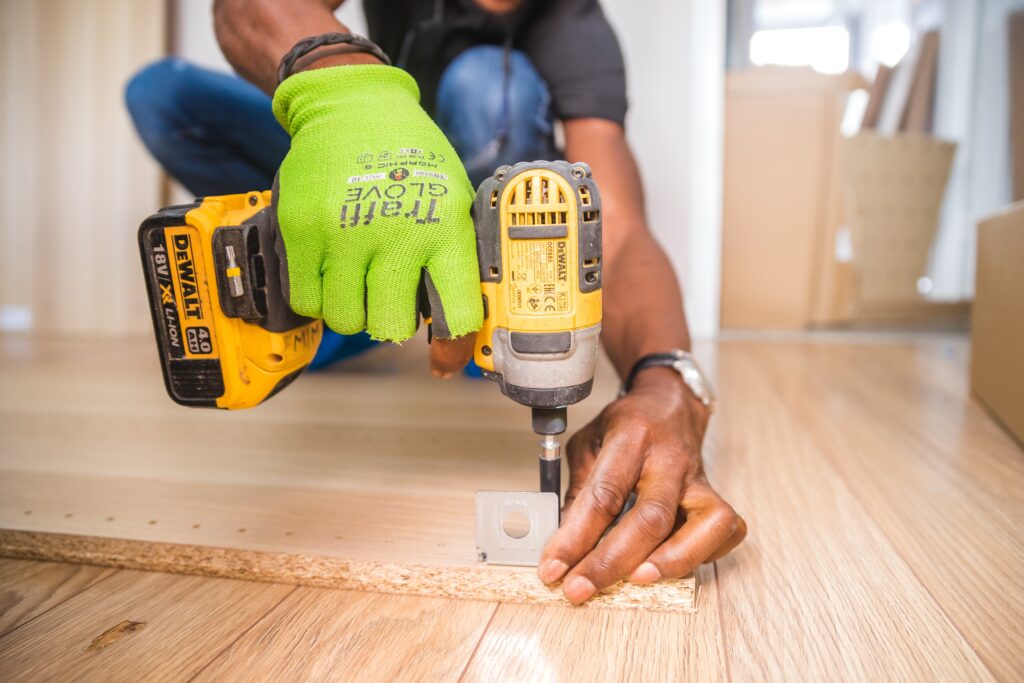
Offering additional services and programs that build relationships, promote community preparedness, and improve residents’ health and well-being.
Communications

Ensuring the ability to communicate within and outside the service area year-around and especially during disruptions and throughout recovery.
Building & Landscapes
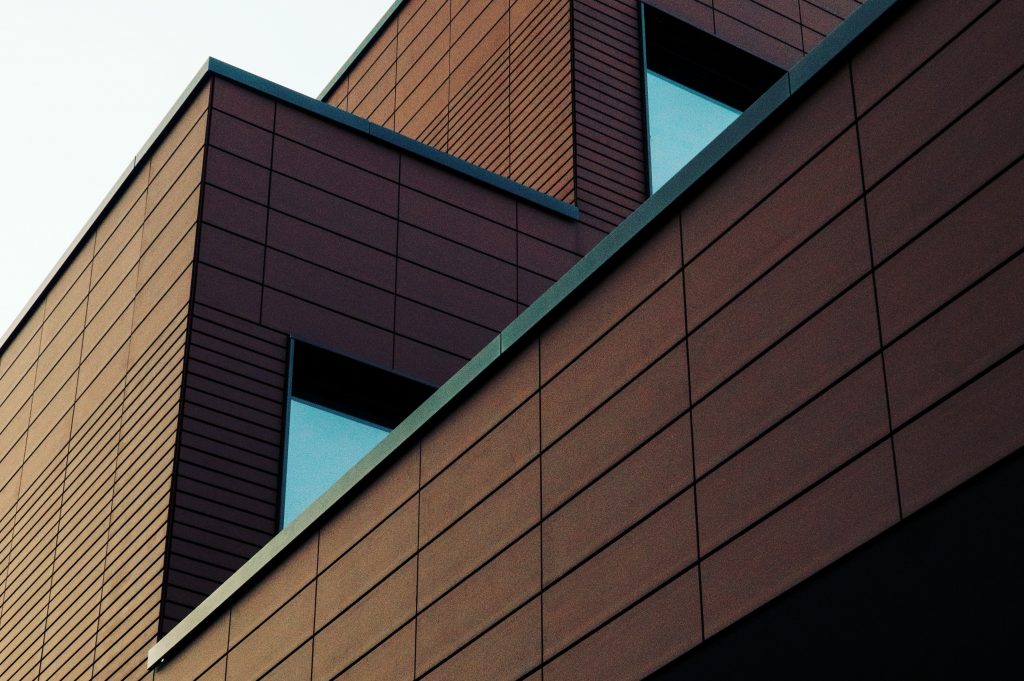
Strengthening the resilience of the facility to ensure that it meets operational goals in all conditions.
Power
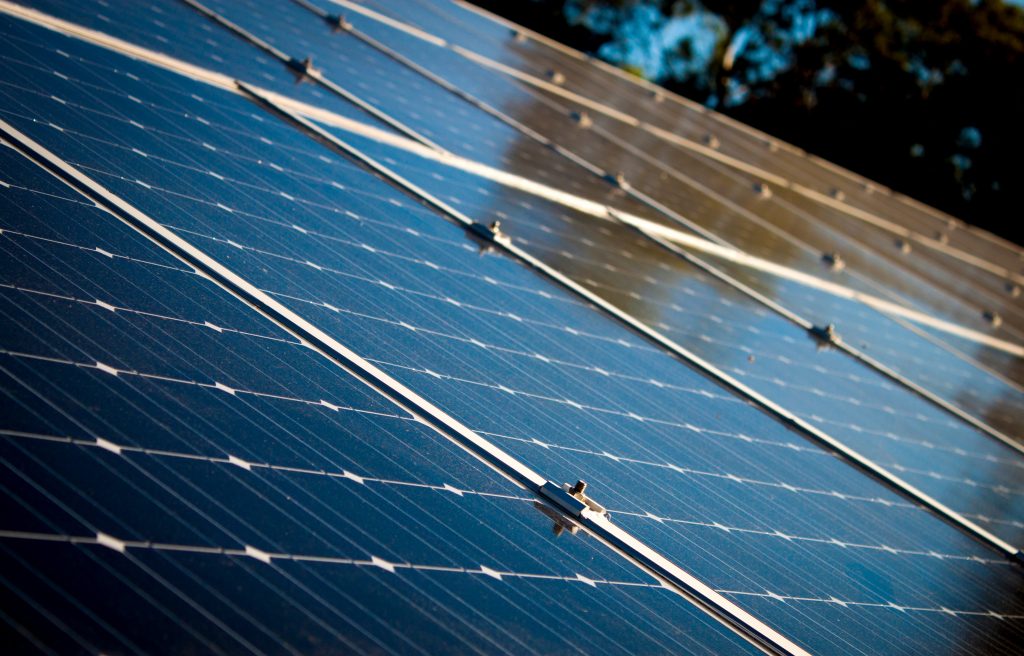
Ensuring reliable backup power to the facility during a hazard while also improving the cost-effectiveness and sustainability of operations in all three operating modes.
Operations
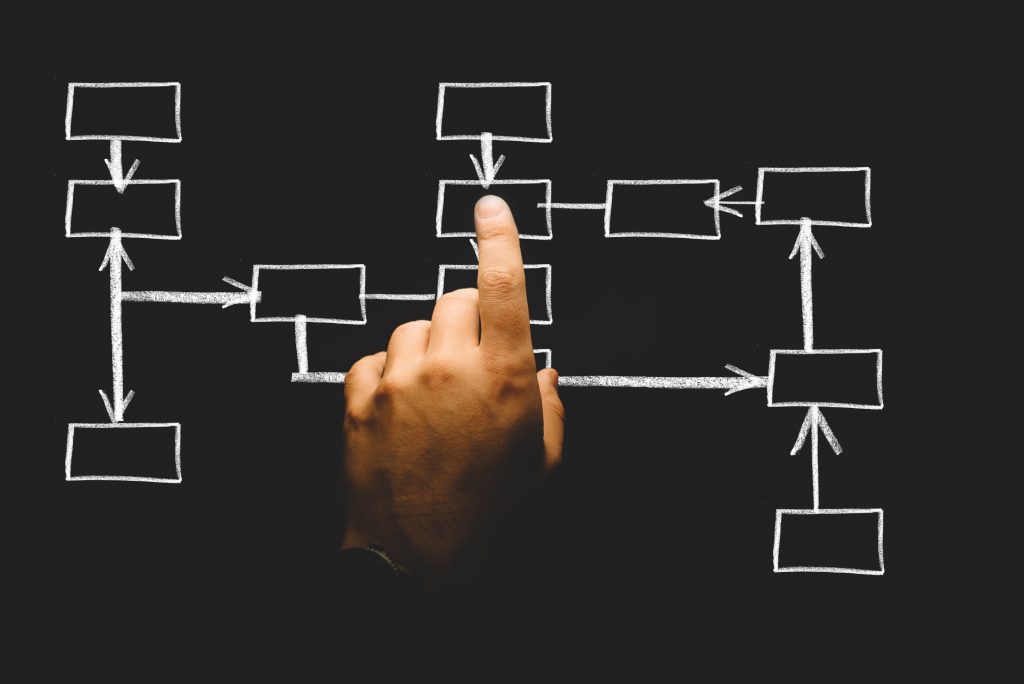
Ensuring personnel and processes are in place to operate the facility in all three modes.
Three Options for Resilience Hubs
Resilience is never complete, nor is a Resilience Hub. By nature, Resilience Hub components will evolve over time to align with changing climates, contexts, and hyper-local needs and assets. Identifying core ‘base’ hub components in addition to longer term ‘optimal’ and ‘ideal’ site elements helps to move away from a ‘check box’ approach by identifying a pathway of incremental steps for site implementation.
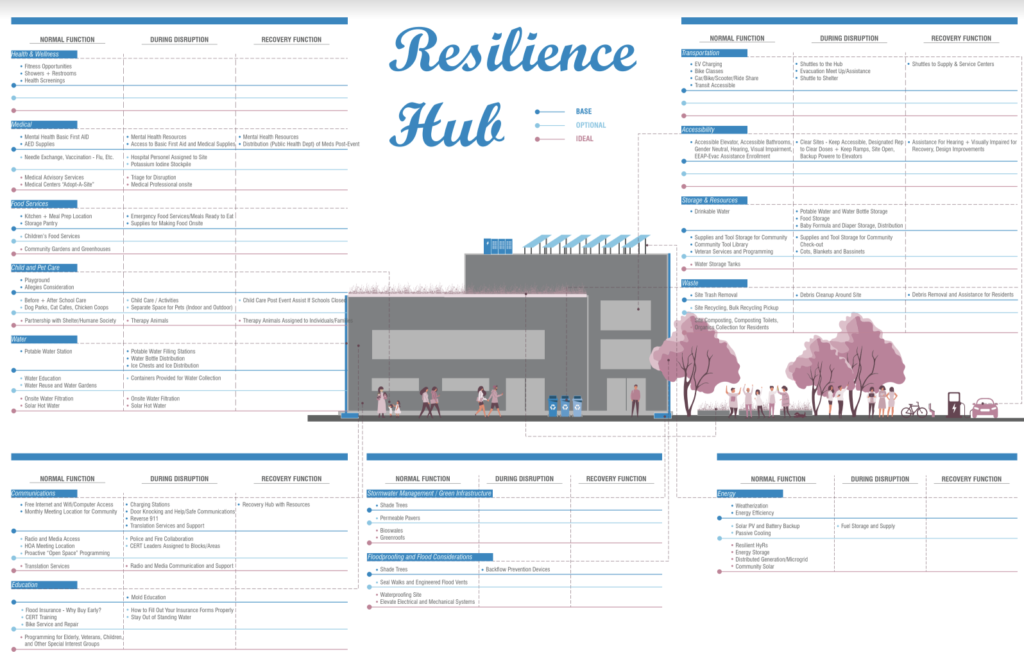
Base
Sites meet the minimum criteria for being a Resilience Hub across all three resilience modes including:
- Strong community support and leadership
- A site that is well-trusted
- A building or set of buildings
- Resilient energy systems
- Resilient communications systems
- Base programming and services co-developed with community
Optimal
Site meets all the minimum criteria set for the Base Hub but will also incorporate a range of expanded services and resilience-enhancing retrofits. Illustrate components include:
- Water capture and filtration onsite
- Air filtration
- Solar with battery backup
- Community gardens
Ideal
Ideally Resilience Hubs will have (and meet) ambitious goals that provide community benefits year-round. Illustrative ambitious goals, co-developed with community members and partners, include:
- Greywater reuse onsite
- Biophilic design standards
- Net zero energy
- Having community solar benefits for the surrounding community.
Progress Reports
Progress Reports offer a snapshot of Resilience Hub implementation progress for various Resilience Hub sites part of USDN’s Community of Practice. These Progress Reports will be updated over time as site components and needs evolve.
Click below to access a the affiliated progress report for each site.
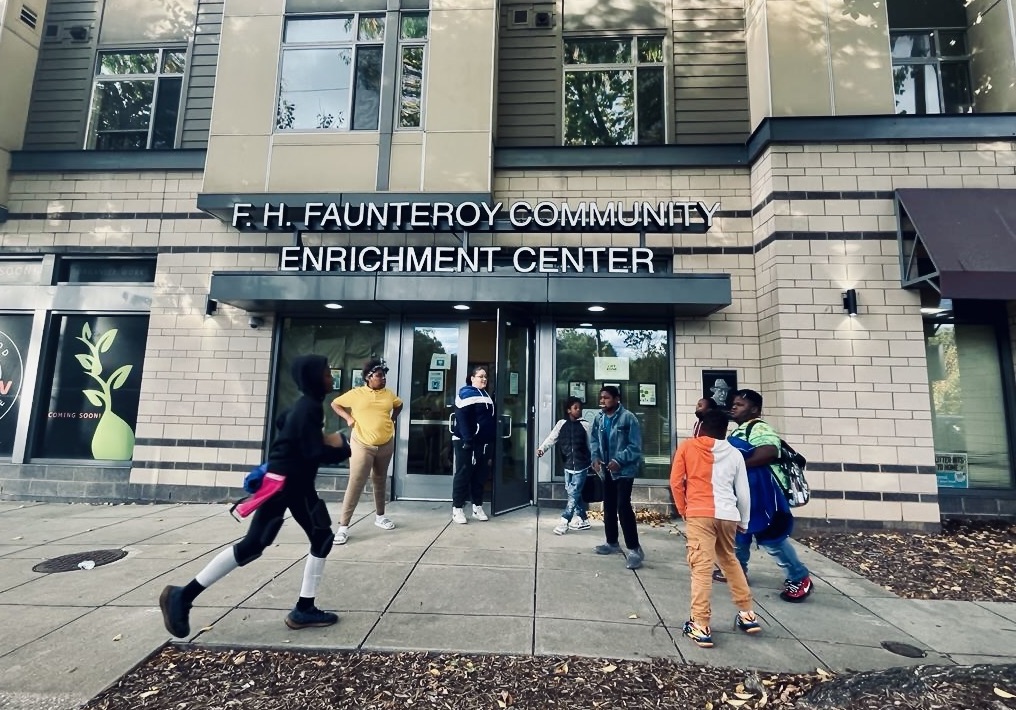
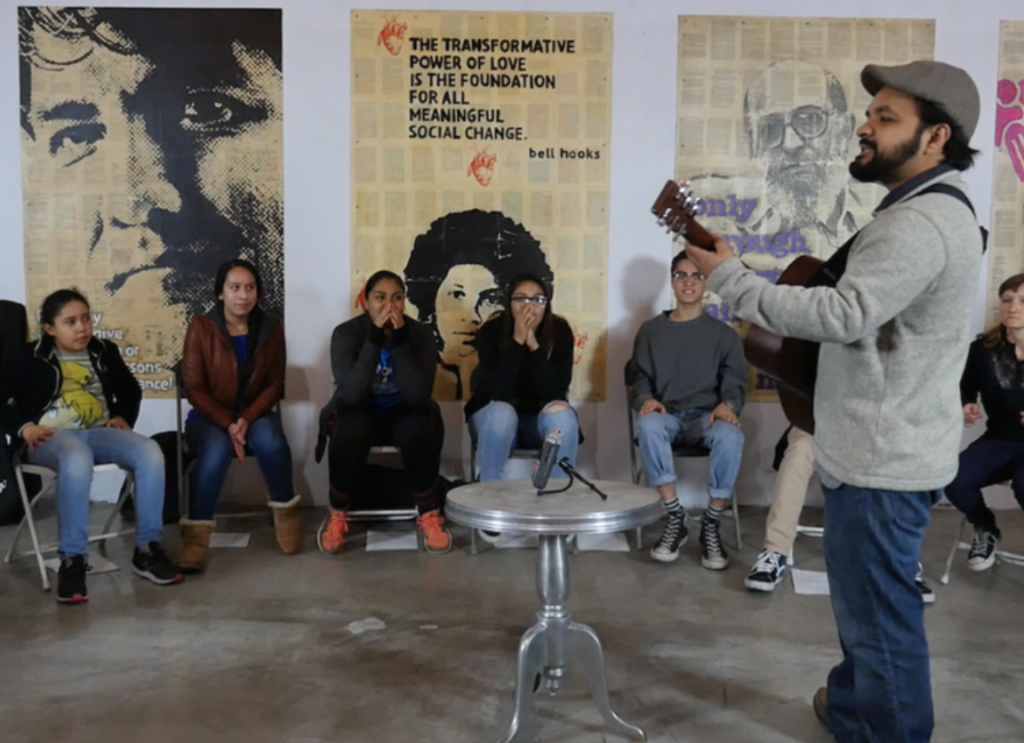

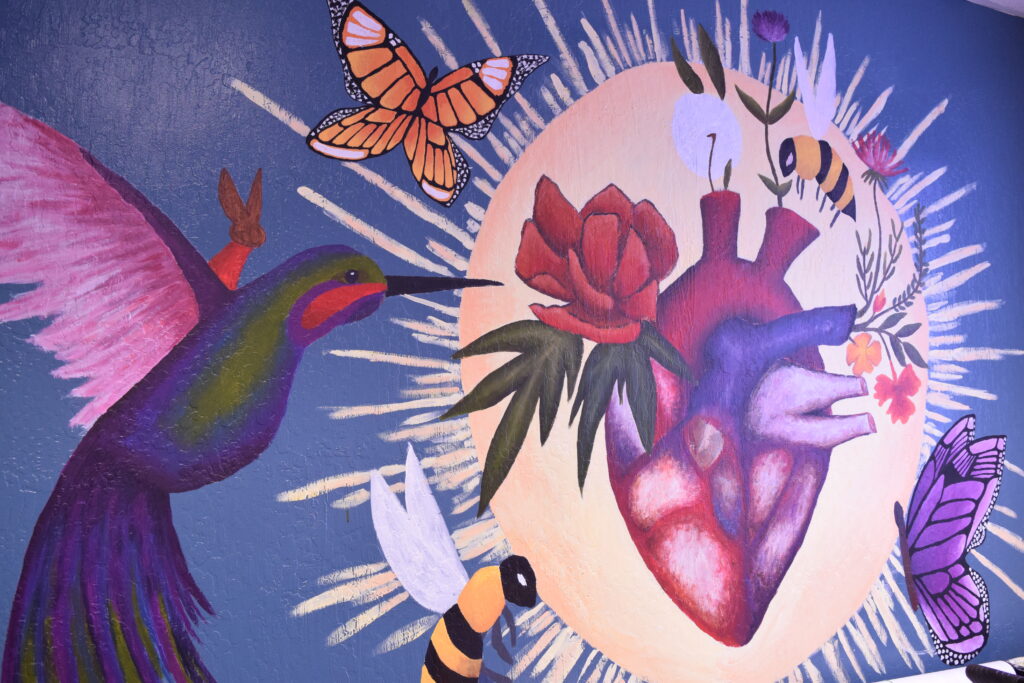
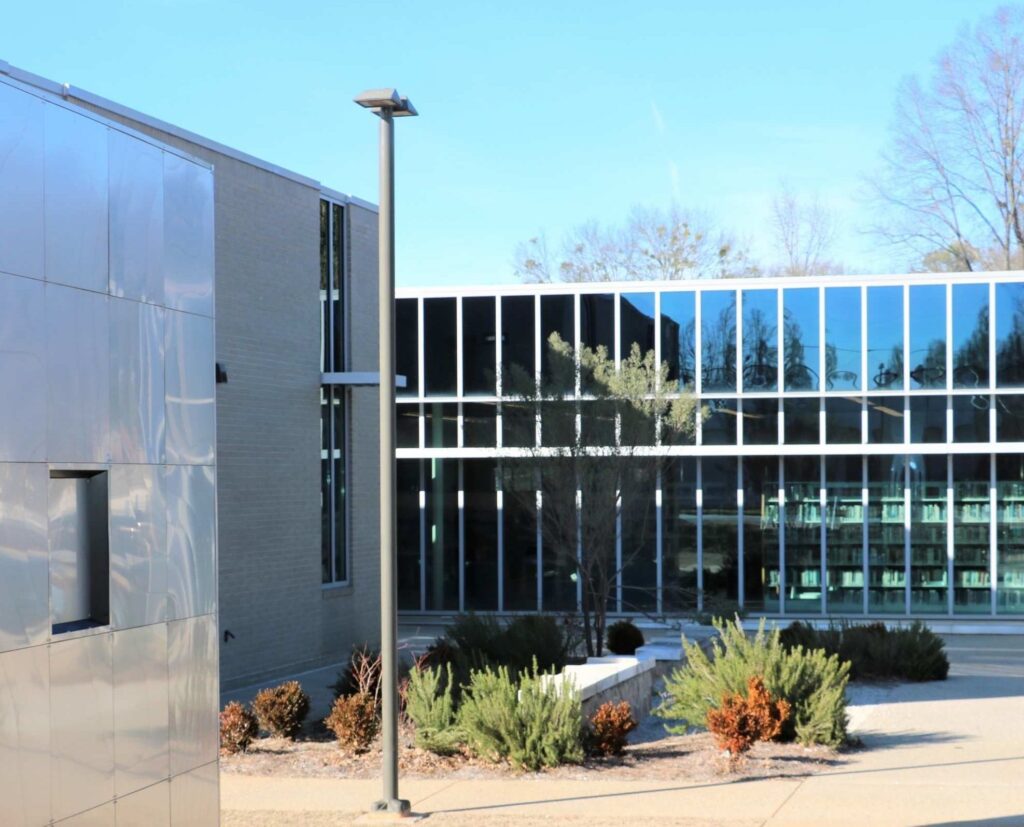
COMING SOON: Metropolitan Library Progress Report
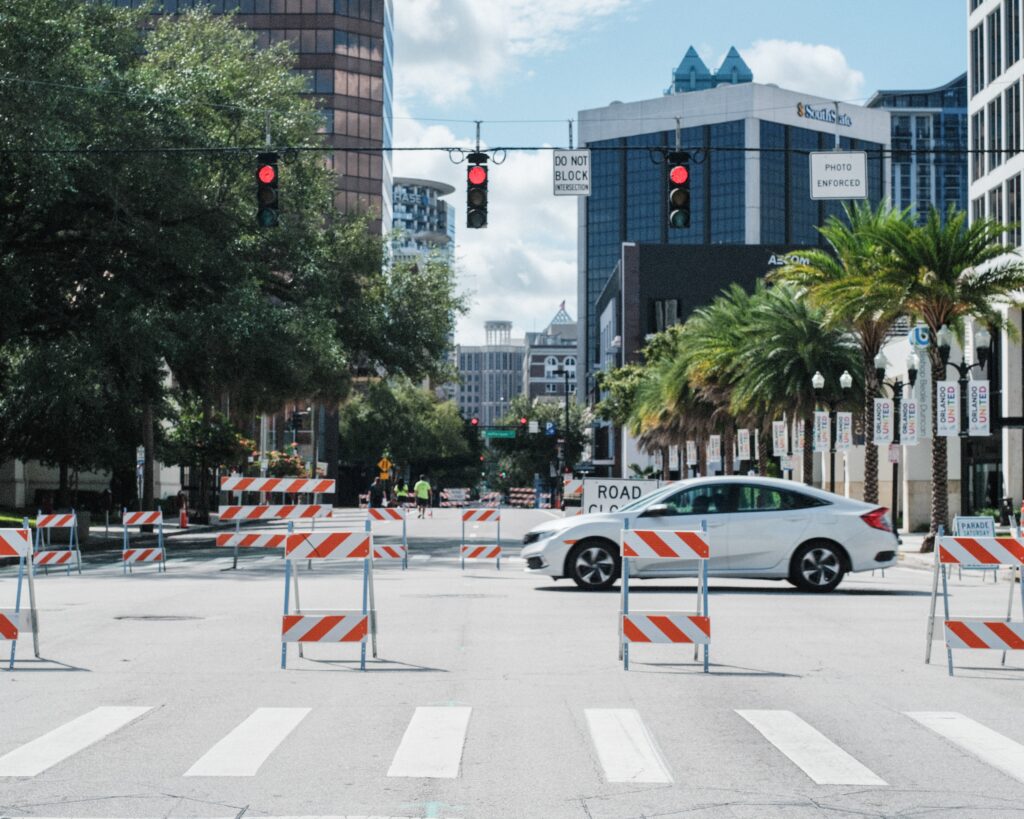
COMING SOON: Orlando Resilience Hub Progress Report
Additional resources and insights are available to member and partners in the Resilience Hub community of practice. To get involved, click here.
All USDN Resilience Hubs materials are under Creative Commons Attribution-Non Commercial-Sharealike 4.0 license (CC BY NC SA). This means reusers can distribute, remix, adapt, and build upon the material in any medium or format for noncommercial purposes only, and only so long as attribution is given to USDN. If you remix, adapt, or build upon the material, you must license the modified material under identical terms. USDN is using this license to maintain the integrity of the work while also sharing it widely and making it possible for people to continue to build and iterate. It may not be shared commercially. You may find more information about this license here.
